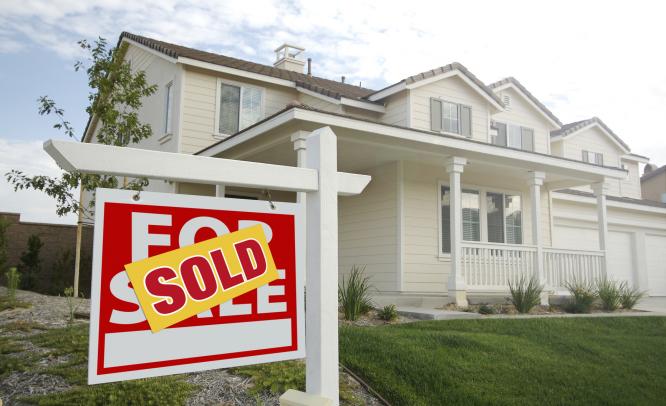The housing sector Down Under is booming as interest rates are near record lows and banks are rushing in to up lending, reports Team IFM
Canberra, February 11: With liquidity from willing lenders pouring in, Australians are flocking to financiers for further home loans, pushing up prices of building units and keeping the central bank interested in boosting housing construction to create employment.
According to data released by the Australian Bureau of Statistics (ABS), banks approved loans worth A$27.05 billion in December 2013, a 0.2 percent increase over the previous month, and a reflection of the rising curve in disbursements over the 12-month period last year.
Analysts say it’s the investors who are reaping the benefit of the surge in prices.
They also point to the lowering of interest rates by major lenders as a “significant” factor, which has been further boosted by the Reserve Bank of Australia (RBA) fanning buyer appetite by halting interest rates at 2.5 percent last week.
“There’s been no pause for reflection over the holiday break,” Australian Property Monitors senior economist Andrew Wilson told The Australian newspaper.
Australia’s central bank last Tuesday moved towards a more neutral monetary policy stance, leaving the overnight bank rate unchanged at 2.5 percent in the hope it “will assist in achieving balanced growth”.
Analysts say that by keeping the overnight interest rate untouched, RBA is trying to stoke construction in the housing sector so as to absorb excess labour created by falling investment in mining – and thereby create employment and boost consumption.
For example, in its quarterly statement on monetary policy released last week, the RBA had said “this effect of lower interest rates on housing prices is an important channel through which expansionary monetary policy supports economic activity. Increases in housing demand and prices boost dwelling construction as well as renovation activity.
“Higher housing prices and turnover also stimulate consumer spending by easing some home owners’ borrowing constraints and raising home owners’ perceptions of wealth. The demand for some real estate, legal and financial services also moves in tandem with housing transactions.”
Investors’ Push
Lenders have been quick to cash in on the opportunity provided by the RBA’s unbiased approach to the lending rate, and have begun encouraging home loan customers to “shop around” for the best deal to suit their needs.
“The mortgage market had never been more competitive for customers who are now able to find a home loan that suits their needs with great rate,” said Gavin Slater, Group Executive, Personal Banking cell at the National Australia Bank (NAB), in a statement.
“NAB has led the industry in making banking fairer for all customers, having abolished the most complained about fees and provided customers with the best products and the best service,” Slater said.
Taking advantage of the overall rise in liquidity, it’s the investors more than home buyers who have aggressively pushed the mortgage market, the ABS data shows. According to it, property purchase as an investment in housing rose almost 3 percent in January over the previous month to A$10.77 billion.
Additionally, the increase also reflects a 41 per cent year-on-year upswing and the fastest growth in investment in Australia’s housing sector in a decade.
Interestingly, new home buyers accounted for 9 percent of the non-refinancing loans.
As a result of this buying spree, residential property prices have also simultaneously shot up; data from the statistics office showed that in the October-December 2013 quarter, prices scaled up 9.3 percent from a year-ago period.
The housing market in Sydney posted the biggest gain at 13.8 percent. Compared to it, at the other end of the spectrum, rates in Canberra were down by 0.3 percent, the data showed.
But analysts are sceptical about the momentum continuing.
“The Sydney market has got no sense of stopping at the moment,” said Australian Property Monitors economist Wilson. “The type of growth we’re getting now, at 6 per cent a quarter, is unsustainable, but we must remember how low interest rates are now which has pushed down the repayment on the average loan.”
Unlike Wilson, BIS Shrapnel managing director Robert Mellor was worried over the price spurt in Melbourne, which he said did not as strong fundamentals as Sydney.
Melbourne, he said, had outperformed in the pre-meltdown years in the last decade, he said, which made the oversupply of apartments in various neighbourhoods a reason for worry. “If price growth kept going this strong towards the back end of 2014 there would be a risk of price declines in some segments of the market,” Mellor told The Australian.
RBA HAND
Overall, thanks to the near-record low interest rates and improved economic prospects for both buyers and sellers, the Australian the housing sector has never had it so good.
The way ahead was indicated last November with RBA, the central bank, making it clear that it believed the low interest rates would stimulate housing construction, prices as well as turnover in the established housing market.
RBA also speculated that it was “likely” that these trends would be associated with stronger growth in household consumption over time.
“Subsequently, this pick-up in demand, and the improvement in consumer and business sentiment, is expected to flow through to stronger non-mining business investment, which would contribute to higher GDP growth over 2015,” it had said in a statement.
Last week’s statement by RBA Govrenor Stevens was a continuation of this thinking was not lost on analysts.
“They’ve shifted very firmly to a neutral bias,” Su-Lin Ong, head of Australian economic and fixed-income strategy at Royal Bank of Canada in Sydney, told Sydney Morning Herald.
“The fact they’ve taken out the reference to the uncomfortably high Australian dollar also tells you that they’re clearly pleased with what the currency’s done over the past couple of months,” she said.


